Like other major genres, fantasy is an umbrella term, which means it can be divided into various subcategories (and sometimes sub-subgenres). These subgenres may push certain elements to the forefront, like epic quests or historical settings. Perhaps the subgenre invokes a mood like humor or fear. Or maybe the subgenre just likes to blend conventions from other genres like romance.
Because of the huge spectrum of titles within the fantasy space, and the intersectional nature of the genre, there's a book to fit almost any reader. Sometimes, however, it can be difficult for even a seasoned fantasy reader to pin down the subgenre of a specific book.
That's why, when readers delve into a new subgenre, they might want to explore the classics and foundational works of the category. Whether you want to learn about the subgenre you're already reading or looking for a place to start, here are some classic examples of classic fantasy subgenres.
Fantasy Subgenres and Classic Examples
Alternate History
Often towing the line between sci-fi and fantasy, alternate history combines elements of both genres to posit timelines that are both similar and vastly different from our own. In alternate history, the timeline has often been altered from our reality due to a major divergence in the past. Notable examples of alternate history include The Man in the High Castle by Philip K. Dick; Jonathan Strange & Mr. Norrell by Susanna Clarke; or His Majesty's Dragon by Naomi Novik.
Classic Example of Alternate History
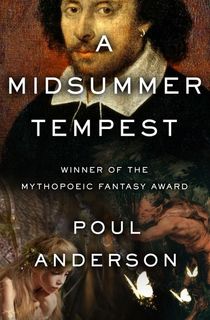
A Midsummer Tempest
The second volume of Anderson’s Holger Danske duology takes place during the English civil war with the Parliamentarians wielding steam-powered technology. And, of course, Shakespeare’s works aren’t fiction but are based on reality.
Arthurian Fantasy
Arthurian fantasy is fantasy that, in some way, incorporates aspects of Arthurian legend. It can be modern retellings of classic Arthurian tales, or reinventions of King Arthur and his many companions. The legends of King Arthur and his knights have been fertile fantasy ground for centuries.
Notable examples of the Arthurian fantasy subgenre include The Mists of Avalon by Marion Zimmer Bradley and The Crystal Cave by Mary Stuart.
Comic Fantasy
As the name suggests, comic fantasy brings humor, parody, and a lighter tone to what can sometimes be a very serious genre.
Notable examples of the comic fantasy subgenre include Good Omens by Neil Gaiman and Terry Pratchett.
Classic Comic Fantasy Example
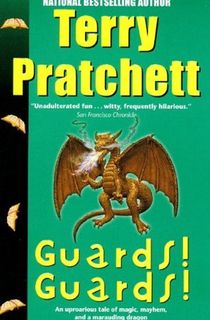
Guards! Guards!
Speaking of Terry Pratchett, no author helped to define the subgenre of comic fantasy more than the late Pratchett and his Discworld series. Though Guards! Guards! is the eighth Discworld novel, each of the stories in the 41-book series can be read as a standalone work. This particular entry offers plenty of magic, mayhem, and marauding dragons.
Dark Fantasy
Dark fantasy is a subgenre that combines fantasy elements with a darker, often horror-tinged tone. In the broad strokes, it can seem difficult to differentiate dark fantasy from grimdark, but once again the key is tone.
Dark fantasy is intentionally ominous and foreboding. It is meant to convey a sense of dread, and typically shares a lot of common ground with horror fiction.
Notable examples of the dark fantasy subgenre include The Dark Tower series by Stephen King and The Library at Mount Char by Scott Hawkins.
Classic Dark Comedy Example

The Nightmare and Other Tales of Dark Fantasy
What defines dark fantasy most is its mood and tone. Novels in this subgenre may incorporate horror elements and feature a dark atmosphere or vibe. Many people consider Gertrude Barrows Bennett as the founder of the dark fantasy subgenre. Writing as Francis Stevens, she published many short stories during the golden era of pulp fantasy.
Dragon Fantasy
In dragon fantasy, everyone’s favorite fantastical creature is front and center to the narrative—whether that be dragons as a key plot point, dragons as main characters, or anything in between. The key here is that the story revolve around dragons!
Notable examples of the dragon fantasy subgenre include Dragonriders of Pern by Anne McCaffrey.
Epic Fantasy
Epic fantasy—also often called high fantasy—is arguably what the average reader thinks of when they hear the word "fantasy."
This fantasy subgenre takes both its name and form from the long tradition of epic storytelling (think Beowulf, Gilgamesh, or The Odyssey) and traditionally sees a large cast of characters questing to end some world-afflicting evil.
Epic fantasy is large both in scale of conflict and the page count.
Notable examples of the epic fantasy subgenre include The Wheel of Time by Robert Jordan and the Earthsea series by Ursula K. Le Guin.
Classic Example of Epic or High Fantasy

The Lord of the Rings Trilogy
Let’s face it. When you ask someone what makes a fantasy novel, they often reply with one or more of the following: a secondary world unlike earth, a group of unlikely heroes, and an evil lord that must be defeated. For that reason, the subgenres of epic fantasy and high fantasy are used interchangeably even though they’re different. High fantasy refers to novels that take place in a secondary world that isn’t Earth but that has its own internally consistent set of rules and characteristics. Epic fantasy, on the other hand, refers to novels that focus on larger-than-life themes and grand quests that involve the fate of the world. For that reason, Tolkien’s tale about the quest to stop the rebirth of a dark lord is held up as the prototype for these subgenres.
Fairy Tale Fantasy
Fairy tale fantasy is a subgenre that incorporates the motifs, conventions, and sometimes plots of classic fairytales and folklore.
This can range from fantasy stories that incorporate traditional fairytale themes, to revisionist examinations, to modern retellings of beloved fairytales, and everything in between.
Notable examples of the fairy tale fantasy subgenre include The Bear and the Nightingale by Katherine Arden Fables by Bill Willingham.
Gaslamp Fantasy
While it may be easily confused with steampunk, steampunk and gaslamp can be thought of as two sides of a Victorian/Edwardian era coin: the former tech-based, and the latter magic-based. Gaslamp leans more heavily into supernatural and magical elements than a 19th century setting.
Notable examples of the gaslamp fantasy subgenre include Jonathan Strange & Mr. Norrell by Susanna Clarke and Stardust by Neil Gaiman.
Grimdark Fantasy
Generally referred to simply as grimdark, this subgenre is defined by a pessimistic, violent, often nihilistic view of its fantasy worlds.
The subgenre's name comes from the tagline of Warhammer 40,000: “In the grim darkness of the far future, there is only war.”
Protagonists are painted in shades of grey, the world has a sheen of grit, and the good guys—such as they are—don’t necessarily prevail.
At its best, grimdark is a reminder that good doesn’t necessarily triumph over evil.
Notable examples of the grimdark fantasy subgenre include A Song of Ice and Fire by George R.R. Martin (although this is more proto-grimdark); Prince of Thorns by Mark Lawrence.
Gothic Fantasy
Gothic fantasy has a lot of overlap with dark fantasy. To delineate the two subgenres, gothic fantasy is part of the gothic literary tradition, which focuses on fear, haunting, and inevitably, a creepy home. Think authors like Edgar Allan Poe and Shirley Jackson.
Classic Example of Gothic Fantasy
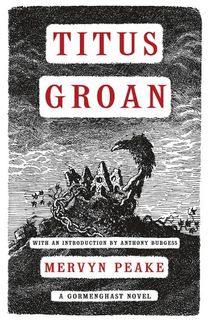
Titus Groan
In terms of gothic fantasy, however, one classic example is Mervyn Peake’s Gormenghast series, which takes place in a sprawling castle that has seen better days and is home to a noble family in decline.
Hard Fantasy
Hard fantasy, like its not so distant cousin hard sci-fi, puts a strong emphasis on details and worldbuilding. In the realms of hard fantasy, internal logic and reason rule the day. Magic systems are explained in granular detail, rich histories are presented for various societies, and geography is often laid out with painstaking accuracy.
Hard fantasy may be the genre where readers see the most overlap with other subgenres—everything from alternate history, to epic fantasy or grimdark can also be hard fantasy. It's all in the presentation.
Notable examples of the hard fantasy subgenre include The Mistborn novels by Brandon Sanderson and The Wheel of Time by Robert Jordan.
Historical Fantasy
Historical fantasy infuses fantastical elements into the more grounded historical fiction genre. Although there are many approaches to this subcategory, most readers associate it with a realistic narrative despite whatever else might be going on. Sometimes it’s set in our world; other times it’s set in secondary fantasy worlds that are inspired by actual historical periods.
Notable examples of the historical fantasy subgenre include The Once and Future Witches by Alix E. Harrow.
Classic Example of Historical Fantasy
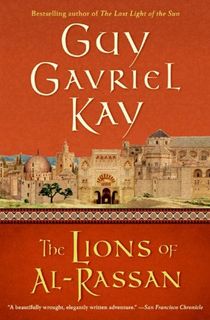
The Lions of Al-Rassan
Most of Kay’s novels fall into the subgenre of historical fantasy. The Lions of Al-Rassan, for example, looks at the relationships between people based on historical Jews, Muslims, and Christians in a world inspired by Moorish Spain.
Low Fantasy
Low fantasy deals with the intrusion of some fantastical/supernatural/magical occurrence into an otherwise mundane world. Imagine walking down the street and seeing a gnome dart into view—this is low fantasy.
Low fantasy can be tricky to distinguish from similar subgenres, such as magical realism. A good rule of thumb is that in low fantasy, the fantastic event breaks—or intrudes on—the worldview of the protagonist. Whereas in a subgenre like magical realism, the fantastic event is an accepted and understood part of the worldview of the protagonist.
Notable examples of the low fantasy subgenre include All the Birds in the Sky by Charlie Jane Anders and Cemetery Boys by Aiden Thomas.
Magical Realism
Magical Realism is built on the concept that fantastical elements and abilities are a normal, everyday part of an otherwise mundane or realistic world. Essentially, everything is as it is in our world, save for a specific fantastic element.
Notable examples of the magical realism subgenre include One Hundred Years of Solitude by Gabriel Garcia Marquez and Beloved by Toni Morrison.
Mythic Fantasy
Mythic fantasy is a subgenre that specifically draws its inspiration from myth and legend, often incorporating elements and themes that are identifiable with a particular subset of myth from a given culture.
A common trope in mythic fantasy is the idea that modern world is either in peril, or on the verge of breakdown. The protagonists look to ancient mythology and find themselves either working with or against gods and supernatural beings.
Notable examples of the mythic fantasy subgenre include American Gods by Neil Gaiman.
Portal Fantasy
Portal fantasy is among the most beloved subgenres, and for many people represents their first foray into the fantasy genre as young readers.
Portal fantasy is characterized by a protagonists making their way through a portal into a fantastical world.
Notable examples of the portal fantasy subgenre include The Lion, The Witch, and the Wardrobe by C.S. Lewis and Every Heart a Doorway by Seanan McGuire.
Romantasy or Fantasy Romance
Before ACOTAR and Fourth Wing launched the term “romantasy” into the common lexicon, it was better known as romantic fantasy or fantasy romance. Fantasy romance is precisely what it sounds like: fantasy novels/series that transplant the traditional tropes of romance genre to a fantastical setting. The focus here is often on relationships, interpersonal drama, and characters discovering love and romance in the midst of a conventional fantasy conflict.
While some readers insist that romantic fantasy puts more emphasis on the fantasy elements whereas fantasy romance frontlines the romantic elements more, the terms are used interchangeably. No wonder romantasy has become the more popular term!
Notable examples of the fantasy romance subgenre include The Night Circus by Erin Morgenstern and Outlander by Diana Gabaldon.
Classic Example of Fantasy Romance or Romantasy

Poison Study
In Poison Study, a young woman becomes a commander’s food taster to avoid execution. And her slow burn romance with the commander’s right hand man is both surprising and delicious.
Science Fantasy
As the name implies, science fantasy blends elements of science fiction and fantasy. A more modern example would be N.K. Jemisin’s The Broken Earth trilogy. An earlier example, however, would be C.S. Friedman’s Coldfire trilogy, about a planet previously colonized by people from a far-future Earth.
Classic Example of Science Fantasy

Black Sun Rising
What sets the world apart is its energy field, which can interact with sentient creatures and bring their greatest dreams and nightmares to life. As the centuries pass, humans have come to an uneasy truce with this mysterious energy, but that stalemate is about to come to a terrible end.
Steampunk Fantasy
Steampunk generally falls somewhere on the spectrum between sci-fi and fantasy. Its hallmark is outlandish technology powered with Victorian/Industrial Age mechanics inspired by the imaginings of authors like Jules Verne and H.G. Wells.
Steampunk is often set in an alternate history that either posits modern technologies powered by steam in a 19th-century world (usually the American West or Victorian England), or a future where steam power remained a dominant energy source.
Notable examples of steampunk fantasy include Perdido Street Station by China Mieville and Boneshaker by Cherie Priest.
Superhero Fiction
Similar to its close cousin the superhero comic, superhero fiction is a genre of speculative fantasy/sci-fi that charts the adventures, lives, and inner workings of superheroes.
While novelizations of iconic comic book superheroes (Superman, Spiderman, etc.) are part of the genre, it has also become a haven for original superhero stories that delve more deeply into the inner lives and turmoil of super-powered beings.
Notable examples of superhero fiction include Dreadnought by April Daniels and Wild Cards by George R.R. Martin/The Wild Cards Trust.
Classic Example of Superhero Fiction
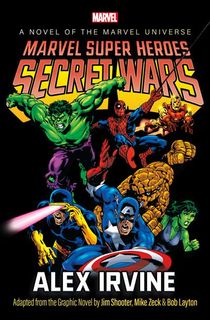
Marvel Super Heroes: Secret Wars
When it comes to superhero stories, it's hard to top the Avengers. This novelization of the classic comic reunites readers with all of their favorites, from Spidey to Cap and the X-Men, too.
Sword and Sorcery
Can you picture a paperback cover with a hulking dude in a loincloth hoisting a sword? That, in a nutshell, is classic sword and sorcery. The iconic adventures of Robert E. Howard's Conan the Barbarian provide the popular template.
In sword and sorcery, the stakes are generally less world-ending, and more personal. The heroes are reluctant, restless wanderers. There are elements of battle (sword) and magic (sorcery) that are intermingled with romance, swashbuckling, and high adventure.
Notable examples of the sword and sorcery subgenre include The Hour of the Dragon by Robert E. Howard and The Ladies of Mandrigyn by Barbara Hambly.
Classic Example of Sword and Sorcery
.jpeg?w=640)
The Coming of Conan the Cimmerarian
The sword and sorcery subgenre revolves around more personal conflicts. Epic fantasy wouldn’t be epic without the fate of the world hanging in the balance, after all. But while sword and sorcery may not feature world-shaking events, it still portrays heroes engaging in exciting adventures. And no other character is more emblematic with this subgenre than Conan the Barbarian.
Urban Fantasy
In urban fantasy, modern urban environments butt up against an often secret underworld of magic and fantasy – whether that’s the forgotten existence of magic in the modern world, or an underground community of supernatural creatures hiding in plain sight.
The conflicts typically revolve around attempts to keep the supernatural or fantastical elements secret from the wider world.
Notable examples of the urban fantasy subgenre include The Dresden Files by Jim Butcher and October Daye by Seanan McGuire.
Classic Example of Urban Fantasy
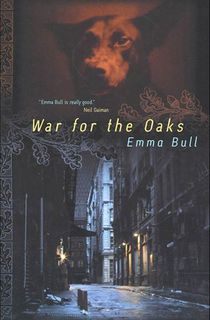
War for the Oaks
Urban fantasy grounds us with the familiar while still presenting classic magical or supernatural elements. Although this isn’t a hard and fast rule, novels in this subgenre typically take place in a contemporary Earth setting. It may feature supernatural creatures like vampires and werewolves. Mages might exist in the open or they might live in a secret world hidden from mundane society. Set in Minneapolis, War for the Oaks hits all these points. Bull’s novel is about a musician who gets caught in a conflict between the Seelie and Unseelie Courts of Faerie.
Young Adult Fantasy
Of all the subgenres listed here, young adult fantasy may be the most broad. Realistically, young adult fantasy can dovetail with any other fantasy subgenre.
So, while you can read young adult urban fantasy or young adult steampunk, there are a few hallmarks that separate YA fantasy from the pack.
In YA fantasy versus adult fantasy, there is more of a reliance on interpersonal conflict; worldbuilding is generally confined to only what is needed to move the story forward; there is often a coming-of-age throughline; and the characters themselves tend to be young adults.
Notable examples of the YA fantasy subgenre include Children of Blood and Bone by Tomi Adeyemi and Six of Crows by Leigh Bardugo.
Vampire Fantasy
Vampire fantasy is a subgenre that puts the focus squarely on the nocturnal literary descendants of Dracula.
Vampire fantasy has evolved over the last few decades to present these once-nefarious creations as more akin to tragic heroes/anti-heroes. It also tends to lean heavily on gothic tropes, paranormal romance, and sexuality.
Notable examples of the vampire fantasy subgenre include The Southern Vampire Mysteries by Charlaine Harris and basically anything by Anne Rice.






.jpeg?w=640)